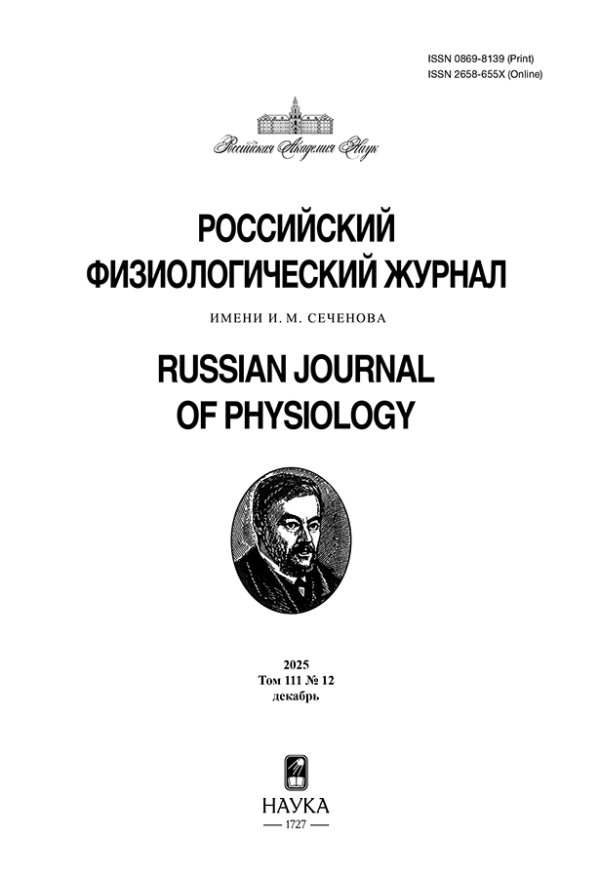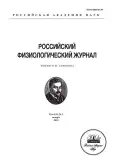Динамика экспрессии генов костного гомеостаза при развитии асептического некроза головки бедренной кости в эксперименте
- Авторы: Шабалдин Н.А.1, Синицкая А.В.2, Шабалдин А.В.1,2, Мухамадияров Р.А.2
-
Учреждения:
- Кемеровский государственный медицинский университет МЗ РФ
- НИИ комплексных проблем сердечно-сосудистых заболеваний
- Выпуск: Том 109, № 1 (2023)
- Страницы: 94-108
- Раздел: ЭКСПЕРИМЕНТАЛЬНЫЕ СТАТЬИ
- URL: https://journals.rcsi.science/0869-8139/article/view/137887
- DOI: https://doi.org/10.31857/S0869813923010107
- EDN: https://elibrary.ru/IYJYVU
- ID: 137887
Цитировать
Полный текст
Аннотация
Патогенез ряда заболеваний характеризуется нарушением регуляции костного гомеостаза с прогрессирующим развитием остеодеструкции. Вместе с тем ведется активное изучение механизмов, приводящих к смещению баланса остеорепаративного и остеорезорбционного направления остеогенеза. Определение молекулярно-клеточных паттернов, влияющих на динамику изменений костного метаболизма, является значимой задачей в среде широкого круга специалистов. Такие исследовательские работы позволяют предложить алгоритмы таргетного терапевтического воздействия на различные ключевые звенья патогенеза остеодеструкции. В проведенном исследовании выполнен анализ экспрессии генов, участвующих в поддержании костного гомеостаза, а также изучено изменение гистологической картины в экспериментальных условиях в зависимости от времени, прошедшего с момента индукции асептического некроза. Результаты работы отобразили гетерогенность развития остеодеструкции в экспериментах на крысах линии Вистар при хирургически созданном очаге гипоперфузии головки бедренной кости на фоне повышения внутрисуставного давления. В первые две недели развития асептического некроза наиболее активно экспрессировался ген hif1a, который может рассматриваться с позиции триггера дальнейшего нарушения костного метаболизма. При этом экспрессия мРНК генов остеогенеза и остеорезорбции была снижена. Наиболее активные остеолитические процессы по данным электронной микроскопии, а также увеличение экспрессии генов индукции остеокластогенеза наблюдались на 6-й неделе эксперимента. Остеорепаративная направленность метаболизма костной ткани постепенно увеличивалась от начала исследования, и через 2 мес. после индукции аваскулярного некроза головки бедренной кости в образцах определялись активные остеобласты, усиление экспрессии генов костного матрикса и остеобластогенеза. Таким образом, развитие остеодеструкции является крайне гетерогенным процессом с динамически меняющимися в зависимости от времени молекулярными паттернами, определяющими активность сигнальных путей костного метаболизма.
Ключевые слова
Об авторах
Н. А. Шабалдин
Кемеровский государственный медицинский университет МЗ РФ
Автор, ответственный за переписку.
Email: shabaldin.nk@yandex.ru
Россия, Кемерово
А. В. Синицкая
НИИ комплексных проблем сердечно-сосудистых заболеваний
Email: shabaldin.nk@yandex.ru
Россия, Кемерово
А. В. Шабалдин
Кемеровский государственный медицинский университет МЗ РФ; НИИ комплексных проблем сердечно-сосудистых заболеваний
Email: shabaldin.nk@yandex.ru
Россия, Кемерово; Россия, Кемерово
Р. А. Мухамадияров
НИИ комплексных проблем сердечно-сосудистых заболеваний
Email: shabaldin.nk@yandex.ru
Россия, Кемерово
Список литературы
- Коршунова ЕЮ, Белохвостикова ТС, Дмитриева ЛА (2011) Иммунологический контроль гомеостаза костной ткани. Политравма 1: 82–85. [Korshunova IM, Belokhvostikova TS, Dmitrieva LA (2011) Immunological control of bone tissue homeostasis. Polytrauma 1: 82–85. (In Russ)].
- Carrillo-López N, Martínez-Arias L, Fernández-Villabrille S, Dusso A, Cannata-Andía JB, Naves-Díaz M, Panizo S (2021) Role of the RANK/RANKL/OPG and Wnt/β-Catenin Systems in CKD Bone and Cardiovascular Disorders. Calcif Tissue Int 108: 439–451. https://doi.org/10.1007/s00223-020-00803-2
- Castro LF, Burke AB, Wang HD, Tsai J, Florenzano P, Pan KS, Bhattacharyya N, Boyce AM, Gafni RI, Molinolo AA, Robey PG, Collins MT (2019) Activation of RANK/RANKL/OPG pathway is involved in the pathophysiology of fibrous dysplasia and associated with disease burden. J Bone and Mineral Res 34(2): 290–294. https://doi.org/10.1002/jbmr.3602
- Chen XJ, Shen YS, He MC, Yang F, Yang P, Pang FX, He W, Cao Y, Wei QS (2019) Polydatin promotes the osteogenic differentiation of human bone mesenchymal stem cells by activating the BMP2-Wnt/β-catenin signaling pathway. Biomed & Pharmacother 112. https://doi.org/10.1016/j.biopha.2019.108746
- Chong DY, Schrader T, Laine JC, Yang S, Gilbert SR, Kim HKW (2021) Reliability and Validity of Visual Estimation of Femoral Head Hypoperfusion on Perfusion MRI in Legg-Calve-Perthes Disease. J Pediatr Orthopaed 41(9): 780–786. https://doi.org/10.1097/BPO.0000000000001945
- Чумакова СП, Уразова ОИ, Винс МВ, Шипулин ВМ, Пряхин АС, Букреева ЕБ, Буланова АА, Кошель АП, Новицкий ВВ (2020) Содержание гипоксия-индуцируемых факторов и медиаторов иммуносупрессии в крови при заболеваниях, ассоциированных с гипоксией. Бюл сибирск мед 19(3): 105–112. [Chumakova SP, Urazova OI, Vince MV, Shipulin VM, Pryakhin AS, Bukreeva EB, Bulanova AA, Purse AP, Novitsky BB (2020) The content of hypoxia-induced factors and mediators of immunosuppression in the blood in diseases associated with hypoxia. Bull Siber Med 19(3): 105–112. (In Russ)].https://doi.org/10.20538/1682-0363-2020-3-105-112
- Nikolic N, Jakovljevic A, Carkic J, Beljic-Ivanovic K, Miletic M, Soldatovic I, Andric M, Ivanovic V, Milasin J (2019) Notch Signaling Pathway in Apical Periodontitis: Correlation with Bone Resorption Regulators and Proinflammatory Cytokines. J Endodont 45(2): 123–128. https://doi.org/10.1016/j.joen.2018.10.015
- Udagawa N, Koide M, Nakamura M, Nakamichi Y, Yamashita T, Uehara S, Kobayashi Y, Furuya Y, Yasuda H, Fukuda C, Tsuda E (2021) Osteoclast differentiation by RANKL and OPG signaling pathways. J Bone and Mineral Metabol 39: 19–26. https://doi.org/10.1007/s00774-020-01162-6
- Шабалдин НА, Шабалдин АВ, Попова НЕ, Постникова АВ, Богданов ЛА, Богданов АВ (2022) Экспериментальная модель асептического некроза головки бедренной кости при изучении болезни Легга–Кальве–Пертеса. Фундамент и клин мед 7(3): 23–30. [Shabaldin NA, Shabaldin AV, Popova NE, Postnikova AV, Bogdanov LA, Bogdanov AV (2022) Experimental model of aseptic necrosis of the femoral head in the study of Legg-Calve-Perthes disease. Fundament and Clin Med 7(3): 23–30. (In Russ)]. https://doi.org/10.23946/2500-0764-2022-7-3-23-30
- Yellowley CE, Genetos DC (2019) Hypoxia Signaling in the Skeleton: Implications for Bone Health. Current Osteopor Rep 17: 26–35. https://doi.org/10.1007/s11914-019-00500-6
- Kuroyanagia G, Adapala NS, Yamaguchi R, Kamiya N, Deng Z, Aruwajoye O, Kutschke M, Chen E, Jo C, Ren Y, Kim HKW (2018) Interleukin-6 deletion stimulates revascularization and new bone formation following ischemic osteonecrosis in a murine model. Bone 116: 221–231. https://doi.org/10.1016/j.bone.2018.08.011
- Adapala NS, Kim HKW (2016) Comprehensive Genome-Wide Transcriptomic Analysis of Immature Articular Cartilage following Ischemic Osteonecrosis of the Femoral Head in Piglets. PLoS One 11(4): e0153174. https://doi.org/10.1371/journal.pone.0153174
- Johnson CP, Wang L, Tóth F, Aruwajoye O, Carlson CS, Kim HKW, Ellermann JM (2018) Quantitative MRI Helps to Detect Hip Ischemia: Preclinical Model of Legg–Calvé–Perthes Disease. Radiology 289(2): 386–395. https://doi.org/10.1148/radiol.2018180497
- Lee KS, Kim HJ, Li QL, Chi XZ, Ueta C, Komori T, Wozney JM, Kim EG, Choi JY, Ryoo HM, Bae SC (2000) Runx2 is a common target of transforming growth factor b1 and bone morphogenetic protein 2, and cooperation between runx2 and smad5 induces osteoblast-specific gene expression in the pluripotent mesenchymal precursor cell line C2C12. Mol Cell Biol 23(20): 8783–8792. https://doi.org/10.1128/MCB.20.23.8783-8792.2000
- Dong M, Yu X, Chen W, Guo Z, Sui L, Xu Y, Shang Y, Niu W, Kong Y. (2018) Osteopontin Promotes Bone Destruction in Periapical Periodontitis by Activating the NF-κB Pathway. Cell Physiol Biochem 49(3): 884–898. https://doi.org/10.1159/000493219
Дополнительные файлы















